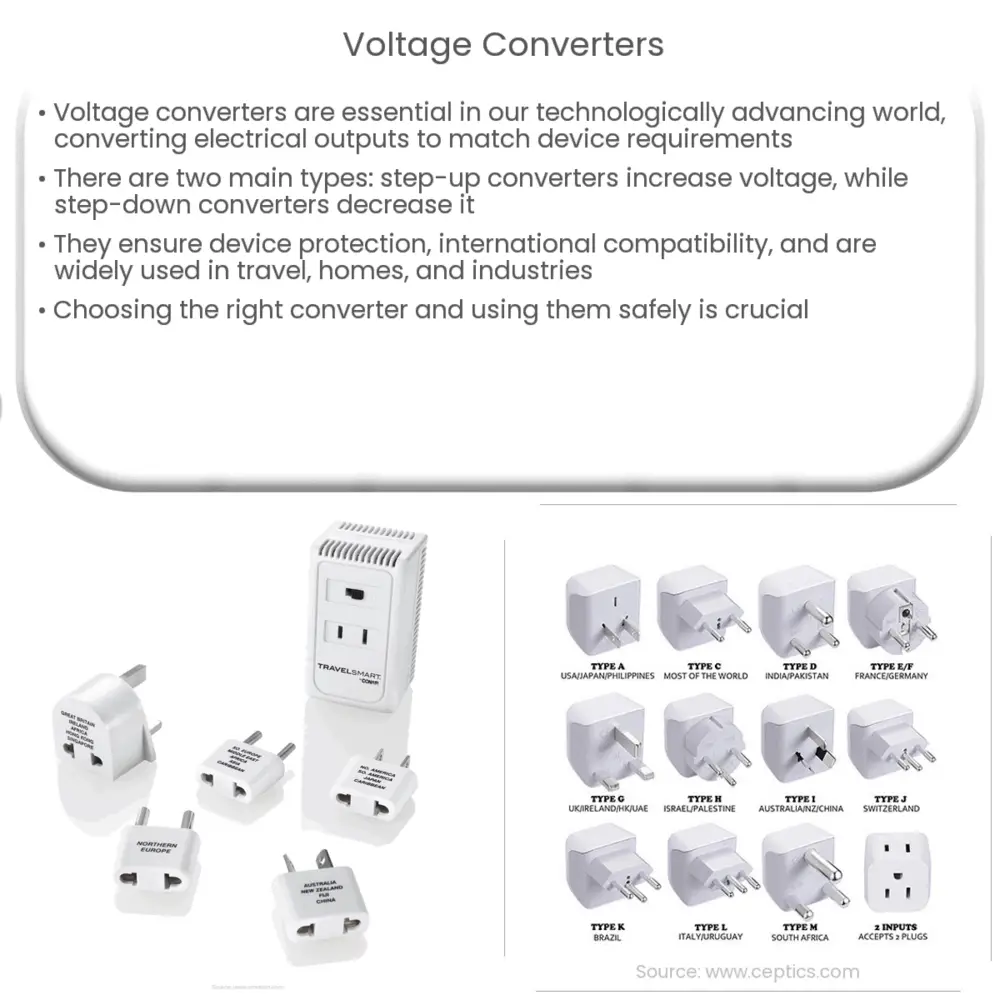Explore our comprehensive guide on voltage converters, their types, importance, uses, and how to choose the right one for your needs.

Voltage Converters: A Comprehensive Guide
Understanding the role of voltage converters in our daily lives is essential in our technologically advancing world. A voltage converter, often referred to as a power converter, is a device designed to convert the electrical output of a power source to match the voltage requirements of a particular device or appliance.
Types of Voltage Converters
There are primarily two types of voltage converters:
- Step-Up Converters: These converters are used to increase the voltage from the power source to the device. For instance, if you have a device that requires 220V but your main power supply provides only 110V, a step-up converter is needed.
- Step-Down Converters: Conversely, these converters are used to decrease the voltage from the power source to the device. If you have a device that requires 110V but your power source provides 220V, you would need a step-down converter.
The Importance of Voltage Converters
So, why are voltage converters crucial?
- Device Protection: Using the incorrect voltage can lead to permanent damage to your electrical devices. Voltage converters ensure that your device receives the correct voltage, thereby prolonging the lifespan of the device.
- International Compatibility: Different countries operate on different voltage systems. For example, North America typically uses 110V, while many European countries use 220V. When traveling or moving between these countries, voltage converters are indispensable to ensure your devices function properly.
The Inner Workings of Voltage Converters
At its core, a voltage converter functions by changing the voltage of an electrical power source through the principle of electrical transformer. This involves a series of coils and magnetic fields, which induce voltage changes. But how exactly does this work?
Inside a transformer, there are two coils of wire (the primary and secondary coil) around a magnetic core. The alternating current (AC) input voltage creates a fluctuating magnetic field around the primary coil, which induces a voltage in the secondary coil. Depending on the ratio of turns between the two coils, the voltage can be stepped up or down.
In step-up converters, the secondary coil has more turns than the primary, increasing the voltage. Conversely, in step-down converters, the primary coil has more turns, decreasing the voltage.
Voltage Converters in Daily Use
From the simplest home appliances to large-scale industrial machinery, voltage converters play an integral part. Here’s a snapshot of their typical uses:
- Travel: Travelers often use portable voltage converters to ensure their devices, like laptops and phone chargers, work safely with different power supply voltages in various countries.
- Home Appliances: Devices like televisions, microwave ovens, and refrigerators often have built-in voltage converters to cope with minor fluctuations in the power supply.
- Industrial Use: Heavy machinery often requires specific voltages that may not align with the standard power supply. Voltage converters help bridge this gap, ensuring safe and efficient operation.
Choosing the Right Voltage Converter
Selecting the appropriate converter requires careful consideration. First, you need to determine the input (source) and output (required) voltages, and whether you need a step-up or step-down converter. Also, consider the wattage of the device you’re powering. Voltage converters should have a higher wattage rating than the appliance to avoid overheating and potential damage.
Limitations and Precautions
While voltage converters are incredibly useful, they are not without their limitations. For instance, they cannot convert frequency, meaning a 60Hz device will still operate at 60Hz even in a 50Hz country. Therefore, it’s essential to check whether your device can handle different frequencies before relying solely on a voltage converter.
Also, using a converter continuously can lead to overheating, potentially causing a fire hazard. It’s recommended to use converters for short periods and ensure they are switched off when not in use.
Conclusion
In conclusion, voltage converters are fundamental components in ensuring the safe and effective operation of electrical devices in our day-to-day lives and in industry. While their underlying technology may be complex, their function is straightforward—either step up or step down voltage to match the requirements of a given device. However, it’s crucial to select the right converter based on your specific needs and to take necessary precautions while using them. As our reliance on technology grows, understanding and using voltage converters correctly will continue to be a vital aspect of our technological literacy.



